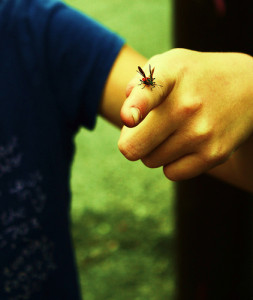
Celebrate National Bubble Day! Kids and adults of all ages enjoy the colors, shapes and possibilities of bubbles.
Create a beautiful portrait or just make homemade bubbles for an afternoon of fun and adventure.
Bubble Burst Paintings
Blowing bubbles never seems to lose its charm for little kids, but here’s a colorful way to make a good thing even better. To start, stir 2 tablespoons of tempera paint or 15 drops of food coloring into a 1/2-cup of bubble solution. Then tape a large piece of paper to a fence or between two trees and have your child blow the bubbles against it. The end result will likely be more about the process than the final product, but he’ll love watching the bubbles hit the paper and burst into vibrant circles and splatters.
Homemade Bubble Recipe
This recipe is a winner. It’s easy to mix up–and inexpensive to boot. Simply stir together 6 parts water, 2 parts Joy dishwashing liquid (this brand works the best), and 3/4 part corn syrup. Store in a covered container.
Have your kids try experimenting with a variety of homemade bubble wands: pipe cleaners bent into interesting shapes, cookie cutters, yogurt lids with the centers cut out, and so on. For a giant bubblemaker, cut off the top and bottom of a large metal can with a can opener and hammer the inside edges until they are smooth (a parent’s job). Dip either end in the solution and wave through the air.
For more fun, try these additional bubble-making techniques.
 Photo by D Sharon Pruitt
Photo by D Sharon Pruitt



